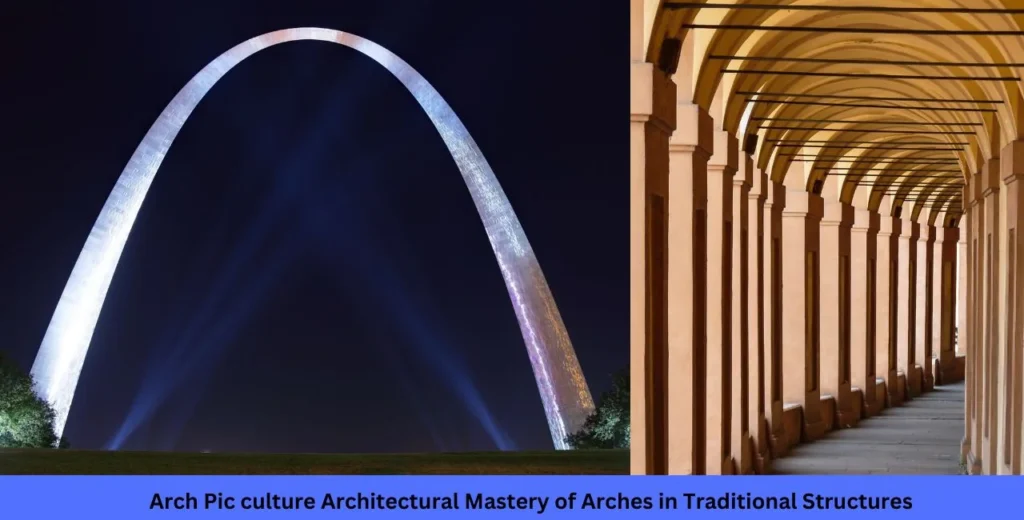Arch pic, a term used in the industry for architectural photography, is a specialized genre that combines the artistry of photography with the technicalities of architecture. Capturing the essence of a building, whether it’s a towering skyscraper or a historical monument, requires not just a keen eye but also an understanding of the structure’s design, purpose, and context. In this article, we will delve into the world of architectural photography, exploring techniques, equipment, and tips to help you capture breathtaking arch pics that stand out.
What is Arch And its importance in traditional culture?
An arch is a fundamental architectural structure characterized by its curved shape, designed to span an opening and support weight. Its importance in traditional culture extends beyond its functional use in construction. Arches have been symbolic and practical elements in various cultures, representing strength, stability, and the passage between spaces, both physical and spiritual. In many societies, arches are central to religious and ceremonial architecture, such as in temples, mosques, and cathedrals, where they often symbolize the heavens or divine protection. The arch’s ability to blend structural integrity with aesthetic appeal has made it a timeless element in the cultural and architectural heritage of civilizations across the world.
Read Also: SSIS 950 Mastering of Full Potential of Data Integration | News PlugboxLinux: The Perfect Performance for Gaming and Tips and Tricks
Understanding the Fundamentals of Arch Pic Photography
The Importance of Perspective in Arch Pics
One of the most critical aspects of taking a great arch pic is perspective. The way you position your camera relative to the building can drastically alter the perception of the structure. When shooting an arch pic, consider whether you want to emphasize the height, depth, or symmetry of the architecture. Using a tilt-shift lens can help correct perspective distortions, ensuring that vertical lines remain straight and true to the building’s design, thus creating a perfect arch pic.
Lighting: Natural vs. Artificial in Arch Pics
Lighting plays a pivotal role in arch-pic photography. Natural light can add warmth and realism to your images, highlighting textures and materials in their true form. However, the time of day is crucial; early morning or late afternoon, often referred to as the golden hours, provide the best natural light for arch pics. On the other hand, artificial lighting allows for creativity and control, especially in interior arch-pics where natural light may be insufficient. Understanding how to balance these two sources of light is key to mastering Architectural Photography.
Composition and Framing in Arch Pics
Composition is the backbone of any great arch pic. The rule of thirds, leading lines, and symmetry are fundamental techniques that can guide the viewer’s eye through the image. However, don’t be afraid to break these rules if it serves the building’s narrative in your arch. Framing is also essential; use natural elements like trees, doorways, or even shadows to frame your arch and add depth.
Read Also: Exploring tex9.net: A Comprehensive Guide to This Digital Asset | Mastering the Art of Online Income with Make1m.com
Top 10 Arch Pics-Photography Ideas
10+ creative ideas for capturing arch pics:
- Golden Hour Arch-Pic: Capture the arch during sunrise or sunset when the light casts a warm glow, emphasizing the arch’s curves and textures.
- Nighttime Arch-Pic: Photograph the arch under the night sky, using long exposure to highlight the structure against a backdrop of stars or city lights.
- Reflections: Take an arch pic where the arch is reflected in water, such as a nearby pond or puddle, creating a symmetrical and artistic composition.
- Black and White: Shoot the arch in black and white to focus on its form and contrast, removing the distraction of color.
- Framing with Nature: Use natural elements like trees, flowers, or vines to frame the arch, blending architecture with the environment.
- Close-Up Details: Focus on the intricate details of the arch, such as carvings, patterns, or the texture of the materials, to capture its craftsmanship.
- People and Scale: Include people in your arch pic to show the scale of the structure, emphasizing its grandeur or intimacy.
- Drone Photography: Use a drone to capture an aerial view of the arch, providing a unique perspective that’s rarely seen.
- Symmetry and Lines: Highlight the symmetry and leading lines of the arch in your composition, drawing the viewer’s eye through the image.
- Seasonal Arch-Pic: Photograph the arch in different seasons—covered in snow, surrounded by autumn leaves, or with blooming flowers—to showcase its changing context.
- Abstract Angles: Experiment with unusual angles or perspectives, such as shooting from directly below the arch, to create abstract and visually striking images.
- Historical Context: Pair the arch with nearby historical elements or artifacts, telling a story of its cultural significance.
Read Also: mygreenbucks.net Revolutionizing Online Earning and Sustainability | Exploring Sophie Rain’s Age and Career: An In-Depth Look
Essential Equipment for Arch Pic Photography
Camera Selection for Arch Pics
While many modern cameras are capable of taking high-quality arch, some are better suited for the task than others. Full-frame DSLRs or mirrorless cameras are ideal due to their larger sensors, which capture more detail and provide better low-light performance. Additionally, having a camera with a high dynamic range (HDR) capability is beneficial when dealing with challenging lighting conditions in arch-pic photography.
Lenses: Wide-Angle vs. Tilt-Shift for Arch Pics
The choice of lens can significantly impact the outcome of your arch pic. Wide-angle lenses are commonly used to capture the entirety of a building or interior space. However, wide-angle lenses can introduce distortion, which may require correction in post-processing. Tilt-shift lenses are a game-changer for arch pic photography. They allow you to adjust the lens plane independently of the camera body, enabling you to correct perspective distortions and achieve sharp focus across the entire arch pic.
Tripod and Stability Tools for Arch Pics
A tripod is indispensable in arch-pic photography. It provides the stability needed for long exposures, especially in low-light conditions, and allows for precise composition adjustments. Investing in a sturdy, adjustable tripod will pay off in the long run. Additionally, a spirit level can help ensure that your camera is perfectly level, preventing any unwanted tilts in your final arch-pic.
Techniques for Capturing Stunning Arch Pics
Mastering Exposure in Arch Pics
Correct exposure is crucial in arch pic photography. Bracketing your shots—taking multiple exposures at different settings—can help you capture the full dynamic range of the scene, which is particularly useful in post-processing. In high-contrast situations, where the sky is much brighter than the building, using a graduated neutral-density (ND) filter can help balance the exposure in your arch pic.
Post-Processing: Enhancing the Arch Pic
Post-processing is where your arch pics can truly come to life. Tools like Adobe Lightroom and Photoshop offer a wide range of options for correcting perspective, adjusting exposure, and enhancing colors. However, the goal should always be to enhance, not alter, the image. Keeping the integrity of the building intact while bringing out its best features is the mark of a skilled arch-pic photographer.
Capturing the Details in Arch Pics
While it’s essential to capture the grandeur of an entire building, don’t overlook the smaller details. An arch pic is as much about the intricate design elements as it is about the overall structure. Focus on textures, materials, and decorative elements that tell the story of the building’s design. These close-up shots can complement wider images and provide a more comprehensive view of the architecture.
Read Also: Tribute Printed Pics: A Comprehensive Guide to Elevate Your Photography | Unveiling the Nnevelpappermann Leaks: What You Need to Know
Sharing and Promoting Your Arch Pics
Building a Portfolio of Arch Pics
A well-curated portfolio is crucial for any arch-pic photographer. It not only showcases your skills but also helps potential clients or collaborators understand your style and capabilities. Organize your portfolio by categories such as exterior, interior, and detail shots, and make sure to include a variety of projects to demonstrate your versatility in arch-pic photography.
Leveraging Social Media for Arch Pics
Social media platforms like Instagram, Pinterest, and Behance are powerful tools for promoting your arch pics. Consistently posting high-quality images, using relevant hashtags, and engaging with the community can help you build a following and attract potential clients. Consider collaborating with architects, designers, or real estate professionals to expand your reach in the arch pic community.
Submitting Arch Pics to Publications and Competitions
Getting your arch published in architectural magazines or online platforms can significantly boost your credibility and visibility. Many publications have open calls for submissions, so keep an eye out for opportunities that align with your style. Additionally, entering photography competitions can provide valuable exposure and feedback from industry experts.
Conclusion
Arch pic photography is a challenging yet rewarding genre that requires a unique blend of artistic vision and technical expertise. By mastering the fundamentals, importance of arch in ancient cultures, investing in the right equipment, and continuously refining your skills, you can capture images that not only showcase the beauty of architecture but also resonate with viewers. Whether you’re shooting for a client, a publication, or your portfolio, remember that every building has a story, and it’s your job to tell it through your lens in each arch pic you create.



